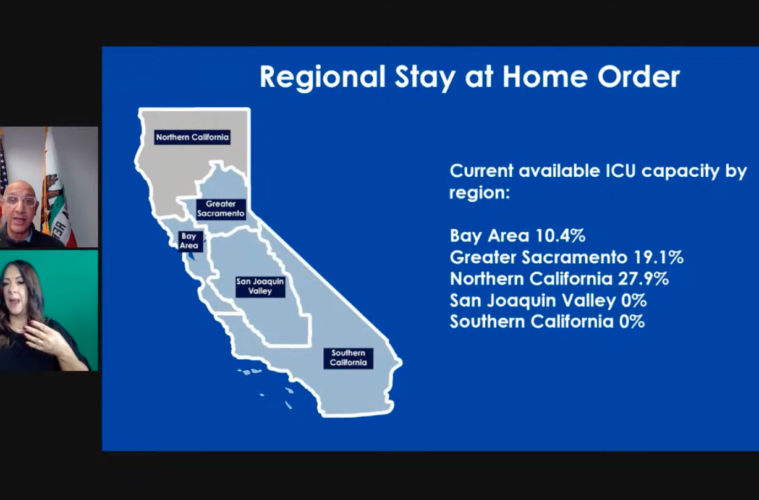Orange County hospitals are now in “Surge Capacity,” according to California Health and Human Services Secretary Dr. Mark Ghaly. Due to the county’s impacted intensive care unit capacity, the county will remain under the regional stay at home order, which was issued by California Governor Gavin Newsom on Dec. 6.
In California, four of the five regions under the order will all continue to operate within the parameters of the regional stay at home order for at least three weeks, or until the county’s intensive care unit capacity rises above 15 percent, Ghaly explained.
“We set the regional stay at home order and regions must remain under the order for at least three weeks, and shall continue in the order until the ICU projections are above or equal to 15 percent,” Ghaly said during an address to the media on Tuesday, Dec. 29. “So, today the order will remain, because those projections do not show that San Joaquin Valley and Southern California have projected four weeks out, ICU capacity above or equal to 15 percent. … We are projecting that ICU capacity is not improving in Southern California and that demand will continue to exceed capacity.”
On Tuesday Dec. 29, the Orange County Health Agency reported 2,452 new COVID-19 cases with one new COVID-19 death.
In terms of ICU capacity in Orange County, on Tuesday, Dec. 29, the Orange County Health Agency reported more than 70 new hospitalizations from a day prior, with a total of 2,106 COVID-19 patients hospitalized, including 473 in the ICU.
Orange County’s ICU capacity was zero percent as of Tuesday, Dec. 29. As Orange County’s ICU capacity continues to shrink, Ghaly cautioned the notion that zero percent capacity in the ICU did not mean there was no room left for care.
“Really, what that means isn’t that there isn’t a single bed open. Hospitals are doing all they can to staff up and create space for beds. What it means is that these two regions are in their surge capacity in the aggregate,” Ghaly said. “So one hospital, one community, one part of a county, one whole county may actual be in surge capacity — while other parts of the region have capacity. So, the point of the regional approach is to make sure that we take care of as many Californians with those regional assets as possible — and this is what we’re doing in Southern California and San Joaquin Valley.”
Ghaly added that “surge capacity” is a process used to distribute the amount of available beds for non-COVID-19 needs, such as heart attack and stroke.
“We tried to ensure that our whole health care delivery system is not just available to take care of COVID-19 patients,” he said.
Ghaly added that these projections are made on a daily basis, with factors including current ICU capacity, current seven-day average case rates, and current rate of transmission determining a county’s status within the regional stay at home order.
“Again, if these numbers are above projections on any day, then the region is released from the order … it is not to say that is there for at least another three weeks. It could be shorter than that depending on how these factors come together on a day-over-day basis,” he said.
On Monday, Dec. 28, California Governor Gavin Newsom said it was clear those orders would extend into the new year, as COVID-19 cases and hospitalizations continue to rise across the state.
“When we conceived this framework, we were looking at projections four weeks out,” Newsom explained. “It is clear, and understandable, that it is likely those stay at home order will be extended.”
As of Dec. 29, in California there are 21,240 COVID-19 patients hospitalized, with 4,390 COVID-19 patients being treated in intensive care unit, according to the California Department of Public Health.
Advertising disclosure: We may receive compensation for some of the links in our stories. Thank you for supporting Irvine Weekly and our advertisers.

